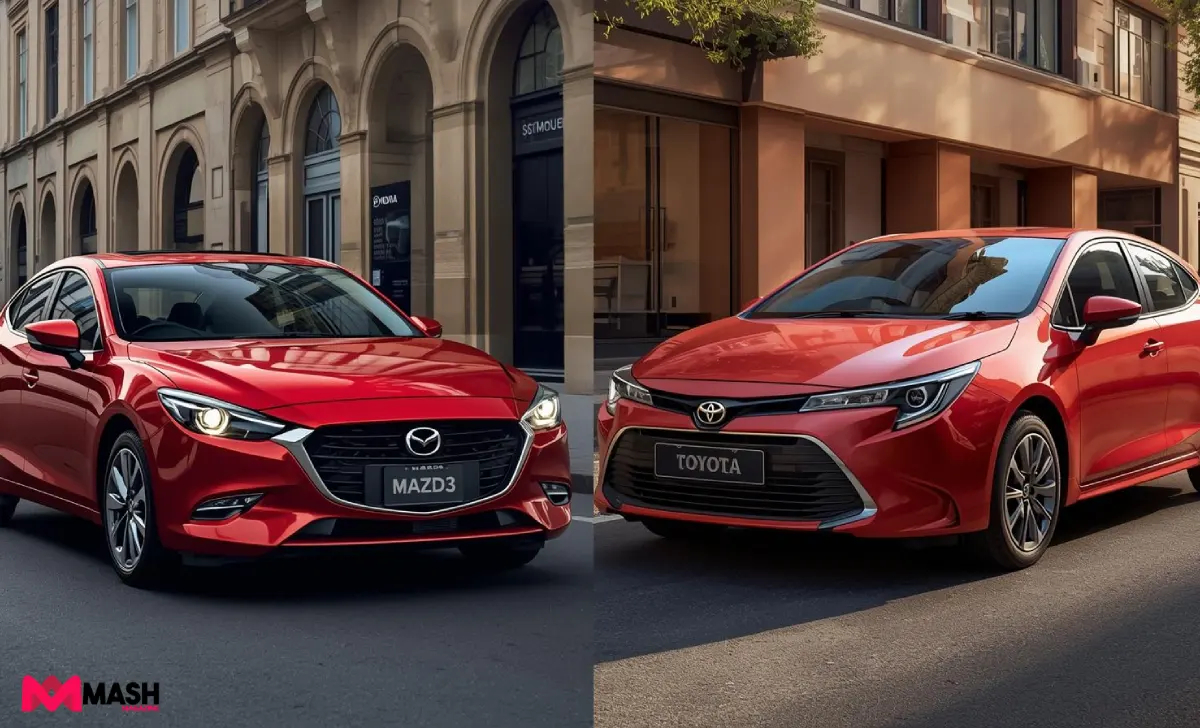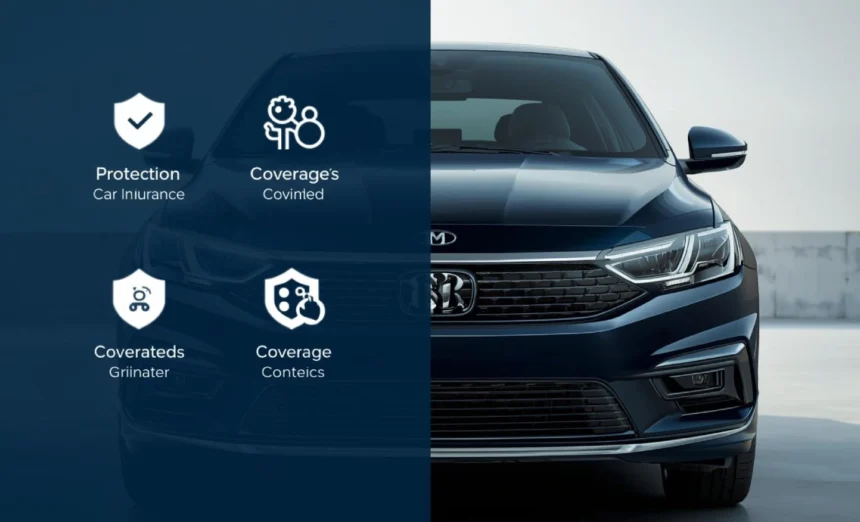Choosing car insurance can feel overwhelming. You know you need cover, but should you pay more for comprehensive or stick with third-party?
- Understanding the Two Types of Car Insurance in Australia
- Comprehensive vs Third-Party: Key Differences Explained
- Pros and Cons of Each Insurance Type
- Real-Life Cost Scenarios Examples
- How to Decide Which Policy Is Worth It in 2025
- Tips to Save on Car Insurance in Australia
- FAQS
- Does car insurance in Australia cover damage from hailstorms or floods?
- Can I switch from comprehensive to third-party insurance mid-policy?
- Does my car insurance cover me when I drive someone else’s car?
- How does car modification affect my insurance premium?
- Is it cheaper to insure an electric or petrol car in Australia?
- Conclusion
The answer depends on your car’s value, your budget, and how much financial risk you can handle. In 2025, Australian drivers face rising premiums and more policy options than ever.
This guide breaks down what each type covers, their real costs, and how to pick the right policy for your situation. You’ll learn the key differences, see actual price examples, and get clear advice on which insurance makes sense for your car.
Understanding the Two Types of Car Insurance in Australia
Car insurance in Australia falls into two main categories: comprehensive and third-party. Understanding these options helps you make an informed choice.
Comprehensive insurance covers damage to your vehicle and other people’s property. Third-party insurance only covers damage you cause to others. Neither type is legally required in most Australian states, but driving without any cover leaves you exposed to massive financial risk.
Most insurers offer variations of third-party cover. These include basic third-party property damage and third-party fire and theft, which adds limited protection for your own vehicle.

1. What Is Comprehensive Car Insurance?
Comprehensive cover protects your car against accidents, theft, fire, storms, and vandalism. It also covers damage you cause to other vehicles or property.
This policy type suits drivers with newer cars or vehicles worth more than $10,000. If your car gets damaged in an accident you caused, comprehensive insurance pays for repairs minus your excess.
Many comprehensive policies include extras like roadside assistance, hire car cover, and windscreen replacement. You can usually add these features when you buy the policy.
2. What Is Third-Party Car Insurance?
Third-party insurance covers damage you cause to other people’s cars or property. It doesn’t cover repairs to your own vehicle.
You can choose between two levels. Third-party property only covers damage to others. Third-party fire and theft adds protection if your car is stolen or damaged by fire.
This option works best for older cars with low market value. If your vehicle is worth less than $5,000, paying for comprehensive cover might cost more than the car itself.
Comprehensive vs Third-Party: Key Differences Explained
The main difference between these policies is what happens when you have an accident. Comprehensive insurance repairs both vehicles. Third-party only fixes the other person’s car.
Your premium reflects this difference. Comprehensive policies cost two to three times more than third-party options. However, they protect you from paying thousands in repair costs out of pocket.
Excess amounts vary by policy type. Comprehensive insurance typically requires a $500 to $800 excess per claim. Third-party policies often have lower or no excess for property damage claims.
Both policy types have exclusions. Neither covers wear and tear, mechanical breakdowns, or damage from driving under the influence.
1. Coverage Comparison
Comprehensive insurance covers your car for accidents (regardless of who’s at fault), theft, fire, storm damage, vandalism, and third-party property damage. Some policies extend to uninsured driver protection.
Third-party property covers only damage you cause to others. Third-party fire and theft adds limited cover for your vehicle if it’s stolen or catches fire. Your own accident damage remains your responsibility.
Neither policy covers intentional damage, racing, or using your car for commercial purposes without declaring it. Always check policy exclusions before buying.
2. Cost Comparison
Comprehensive insurance in Australia costs between $1,000 and $1,800 per year for most drivers. Your premium depends on your car’s value, your age, location, and driving history.
Third-party property insurance ranges from $300 to $600 annually. Third-party fire and theft sits in the middle at $500 to $900 per year.
A 30-year-old Sydney driver with a clean record might pay $1,400 for comprehensive cover on a 2023 Mazda 3. The same driver would pay around $450 for third-party property only.
Pros and Cons of Each Insurance Type
Every insurance type has strengths and weaknesses. Your choice should match your car’s value and your financial situation.
Comprehensive policies offer maximum protection but cost more. Third-party options save money upfront but leave you vulnerable to expensive repair bills.
Consider how you’d handle a $15,000 repair bill if you crashed your car tomorrow. If that amount would cause financial hardship, comprehensive cover provides important security.
Pros and Cons of Comprehensive Insurance
Pros:
- Covers your car regardless of fault
- Protects against theft, fire, and weather damage
- Includes optional extras like hire car cover
- Gives peace of mind for daily driving
Cons:
- Higher annual premiums
- Excess fees apply to each claim
- It may not be cost-effective for cars worth under $5,000
- Premium increases after claims
Pros and Cons of Third-Party Insurance
Pros:
- Much cheaper premiums
- Meets legal obligations for covering others
- No excess on many property damage claims
- Suitable for cars with low market value
Cons:
- No cover for your own vehicle repairs
- You pay all costs if you cause an accident
- Limited protection against theft or fire (unless you add it)
- High financial risk with expensive cars
Real-Life Cost Scenarios Examples
Seeing actual numbers helps you understand the financial impact of each policy type. These examples use real-world situations Australian drivers face.
Remember that your quote depends on personal factors. Your age, location, car model, and claims history all affect the price insurers offer you.

Example 1: New Car Owner in Sydney
Sarah bought a 2023 Mazda 3 worth $35,000. She compared quotes from NRMA and AAMI.
Comprehensive insurance quotes ranged from $1,350 to $1,580 per year with a $700 excess. Third-party property only cost $480 annually.
Sarah chose comprehensive cover. If she has an at-fault accident, her maximum cost is the $700 excess. Without comprehensive cover, she’d pay up to $35,000 to replace her car plus the other driver’s repair costs.
Example 2: Older Car in Regional Queensland
Mark drives a 2012 Toyota Corolla worth $6,500. He lives in Toowoomba and has 15 years of no-claims history.
Comprehensive quotes came in at $850 to $980 annually. Third-party fire and theft cost $420 per year.
Mark chose third-party fire and theft. His car’s low value means comprehensive premiums would cost more than his car’s depreciation over three years. The theft protection gives him some security without the high cost.
How to Decide Which Policy Is Worth It in 2025
Your decision should balance your car’s value against your ability to absorb financial loss. Start by checking your car’s current market value on RedBook or CarsGuide.
Consider your savings too. Could you afford to buy a replacement car tomorrow if yours was written off? If not, comprehensive insurance protects you from that scenario.
Your location matters as well. Sydney and Melbourne drivers face higher theft and accident rates than regional areas. This affects both risk and premium costs.
1. When to Choose Comprehensive Insurance
Pick comprehensive cover if your car is worth more than $10,000 or less than five years old. The replacement cost justifies the higher premium.
Choose it if you’re still paying off a car loan. Most lenders require comprehensive insurance until you own the vehicle outright.
Comprehensive makes sense if you drive in busy city areas with higher accident risks. It also suits drivers who can’t afford unexpected repair bills of several thousand dollars.
First-time drivers often benefit from comprehensive cover too. Your inexperience increases accident likelihood during your first few years on the road.
2. When Third-Party Insurance Makes More Sense
Third-party works well for cars worth under $5,000. Your annual premium shouldn’t exceed 15% of the car’s value.
It suits drivers with strong savings who can self-insure against damage. If you have $10,000 set aside for car emergencies, third-party cover might be enough.
Choose a third-party if you rarely drive or keep your car in a secure garage. Lower risk exposure means you can accept more financial responsibility.
Regional drivers with older vehicles often find third-party adequate. Lower traffic volumes and vehicle values make comprehensive cover less worthwhile.
Tips to Save on Car Insurance in Australia
You can cut insurance costs without sacrificing essential protection. Start by comparing quotes from at least three insurers every year.
Increase your excess to lower your premium. Raising it from $500 to $1,000 typically saves $100 to $200 annually. Only choose an excess you could afford to pay if you claimed.
Bundle policies with one insurer. Many companies discount premiums when you combine car and home insurance.
Improve your car’s security. Installing an alarm or parking in a locked garage can reduce premiums by 5% to 10%.
Ask about no-claim bonuses. Staying claim-free for three to five years unlocks significant discounts. Some insurers offer up to 60% off for long-term safe drivers.
Pay annually instead of monthly. Monthly payment plans add interest and fees that can cost $50 to $100 extra per year.
Review your policy annually. Your car depreciates, so your insurance needs change. Switching from comprehensive to third-party might make sense as your car ages.
FAQS
Does car insurance in Australia cover damage from hailstorms or floods?
Yes, but only comprehensive car insurance covers natural disasters like hail, floods, and storms. Third-party insurance doesn’t include weather-related damage unless specified under special add-ons.
Can I switch from comprehensive to third-party insurance mid-policy?
Yes, you can switch, but most insurers charge a cancellation or adjustment fee. It’s best to compare the remaining premium value before changing — sometimes waiting until renewal saves more money.
Does my car insurance cover me when I drive someone else’s car?
Usually not. Comprehensive and third-party policies cover only the insured vehicle, not other cars you drive. However, some insurers offer optional “drive other cars” cover — always check your product disclosure statement (PDS).
How does car modification affect my insurance premium?
Adding performance or visual modifications — like custom wheels, exhausts, or spoilers — can increase your premium or even void your cover if not declared. Always inform your insurer about any car modifications to stay protected.
Is it cheaper to insure an electric or petrol car in Australia?
Currently, electric cars often cost more to insure because of their higher repair and battery replacement costs. However, many insurers are now offering EV-specific discounts as part of Australia’s shift to sustainable transport.
Conclusion
In 2025, choosing between comprehensive and third-party car insurance in Australia comes down to your car’s value, how you drive, and what financial risks you can handle. Comprehensive cover protects new and valuable vehicles, while third-party options suit older cars and drivers with emergency savings.
Compare quotes from multiple insurers before you decide. Check what each policy actually covers, not just the premium price. Pick the cover that truly protects your financial security and gives you confidence on the road.
Start comparing quotes today. Most insurers provide online quotes in under 10 minutes. Make an informed choice and drive with the right protection for your situation.






